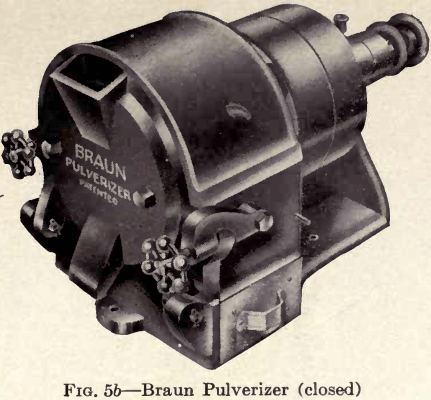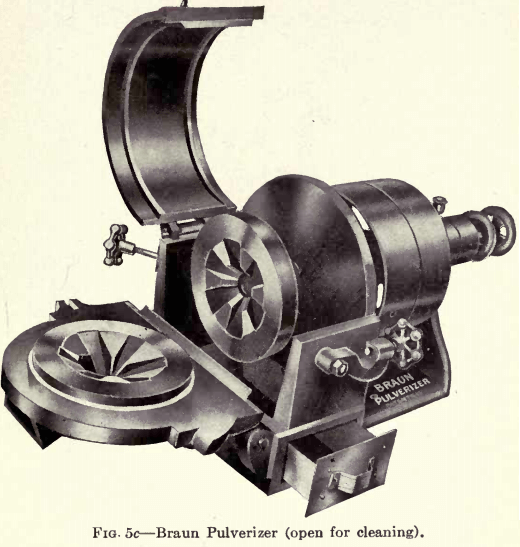Table of Contents
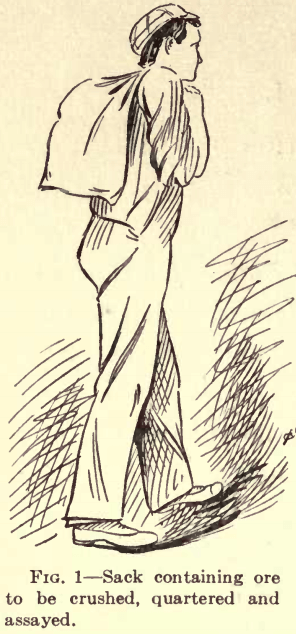 Bulk Sampling
Bulk Sampling
The first step in assaying is to obtain a sample, and it is all important that the portion selected should be representative of the entire quantity (Fig. 1). No special pieces should be picked from the bulk, but the desired quantity is taken indiscriminately from the entire original parcel.
Crushing
Grind or break the entire quantity of the sample to as near as possible a uniform size. This can be done in two ways. The old method was to pound it up in an iron mortar, but now small hand crushers have been placed on the market superseding this old way. The latest improvements in these are called the Simplex, Chipmunk, and Lightning Crushers (Fig. 2). They are light portable machines which will reduce a sample to fragments about the size of peas with one crushing. This will enable the operator to secure an accurate division of the sample. The Chipmunk Crusher (Figures 2a and 2b) is now recognized as the standard laboratory machine. It is made with a steel frame and iron jaws and fittings, which give it great strength. It is made in various sizes, having capacities from 300 pounds to 800 pounds per hour, reducing the rock from about 2 inches in size to ¼ mesh. It can be operated by either hand or power. The front jaw can be readily removed, which exposes all of the crushing chamber for thorough cleaning.
Quartering
Now thoroughly mix by stirring and rolling the crushed ore on a large mixing sheet from end to end of the sheet and then from side to side. Divide into four equal divisions by making a line through the centre of the entire sample, and then another line through the centre of the sample at right angles to the first line. Take the two divisions that are diagonally opposite and discard the balance. Repeat this operation after thoroughly remixing the diagonal portions, and continue doing so until the final remaining two diagonally opposite divisions make such a quantity as will furnish pulp (when the ore has been reduced to a powder it is usually called “pulp”) for several assays of the same sample.
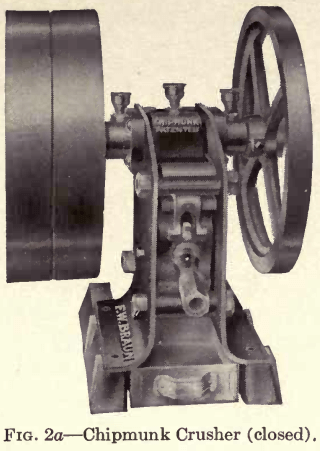 |
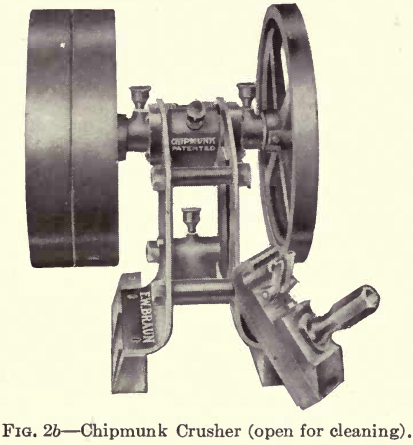 |
Care must be used in this operation as the accuracy of the assay depends largely on this.
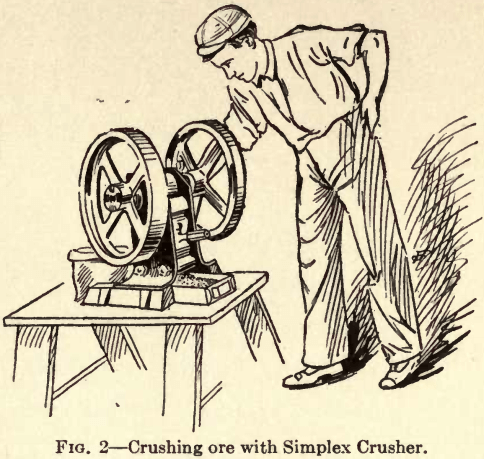
An automatic sampler has been invented (Fig. 3 and 3a) called the Umpire Ore Sampler. This machine guarantees an absolutely accurate dividing of the sample, and is highly recommended where any quantity of work is to be done. Each bucket is divided into four equal sections, two of which are closed and two open. Thus if 16 pounds of ore are put into the hopper and the machine operated, 8 pounds will remain in the upper bucket, 4 pounds pass to the lower bucket, and 4 pounds, or one-fourth of the whole amount will go into the receptacle at the bottom. A second feeding of the 4 pound portion obtained in the first operation would result in a 1 pound sample or one-sixteenth of the total amount. It is advisable to retain a large enough sample to make from four to six assays in case of necessity.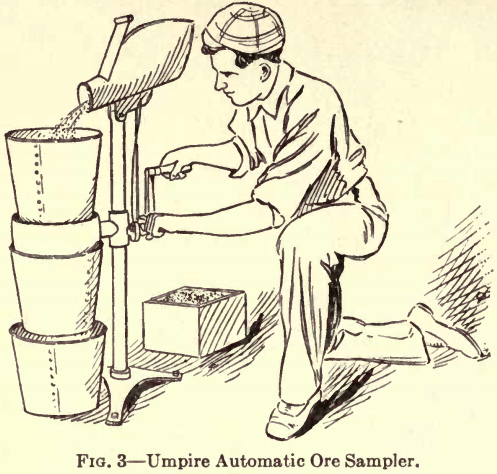
Sample Pulverising or Sample Pulping
It is now necessary to reduce the quartered or remaining sample to a fine powder usually called “pulp.” This is done by grinding the sample on a flat iron plate with an iron rubber, both of which have smooth surfaces, called a “bucking board and muller” (Fig. 4).
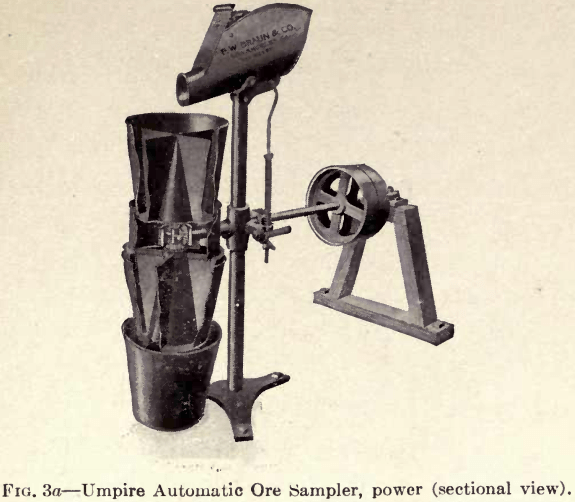
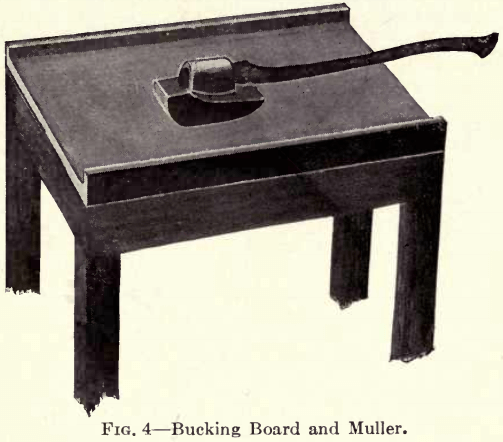
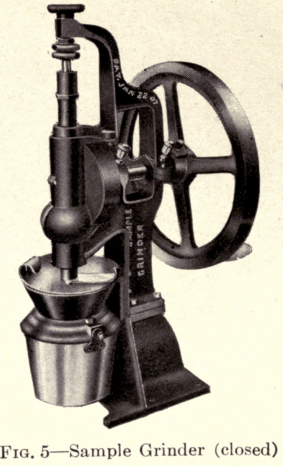
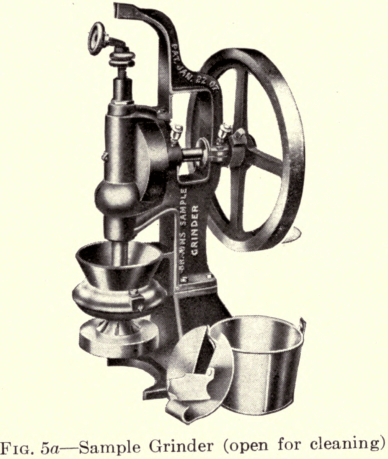
|
|
|
This operation must be done very carefully to avoid losing any of the sample. For this work more modern appliances have been invented. For hand power a Sample Grinder (Fig. 5 and 5a) is the most convenient. This machine replaces the old fashioned bucking board. It consists of two grinding plates mounted in horizontal position and it is between these plates that the pulverizing is done. The lower grinding plate is rapidly revolved by a fly wheel with handle, geared to the vertical shaft. The material is discharged into a removable dust proof bucket. Any desired degree of fineness required for assaying may be obtained with one feeding. A 4 ounce sample of ordinary granite rock can be reduced in this machine to 80 mesh in 2½ minutes. Where power is available the Braun Pulverizer (Figures 5b and 5c) is recommended. The grinding plates in this machine are mounted in a vertical position, and the material is fed through a spout in the door. The discharge is regulated by a hand wheel at the end of the shaft. The paramount features are, (1) that an entire sample can be pulverized with one grinding to any desired mesh; (2) the ease with which all the interior portions are exposed for thorough cleaning; (3) the rapidity with which samples are pulverized, it being possible to grind one pound per minute to 100 mesh. It requires one horse power to operate. Use not less than a 60 mesh or preferably an 80 mesh sieve for pulp samples (Fig. 6). 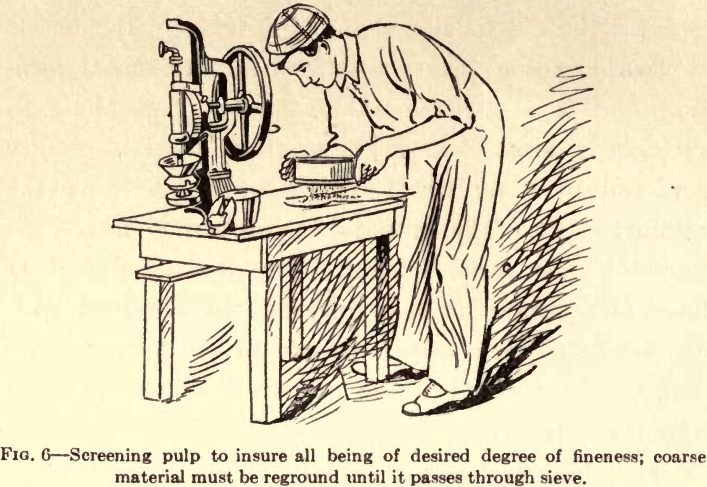 The idea of pulverizing is not merely to disintegrate the ore so as to expose the minute particles to the action of the flux, but more especially to divide the free gold particles present so uniformly that in mixing the sample no one portion will contain coarser and heavier particles of gold than another.
The idea of pulverizing is not merely to disintegrate the ore so as to expose the minute particles to the action of the flux, but more especially to divide the free gold particles present so uniformly that in mixing the sample no one portion will contain coarser and heavier particles of gold than another.

